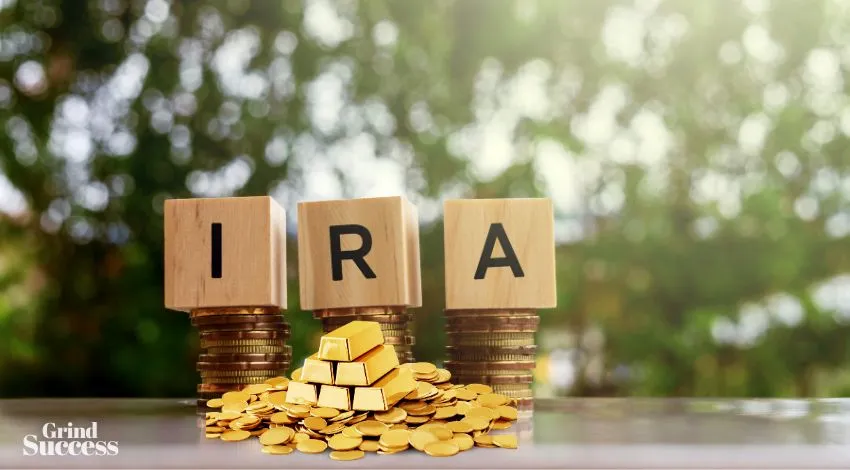Gold IRA Pros and Cons Every Investor Should Know

Investing in individual retirement accounts (IRAs) has become an increasingly popular choice for individuals planning for a secure financial future.
One such option gaining attention is the Gold IRA, which allows investors to diversify their retirement portfolio with precious metals. Investors should be aware of potential drawbacks before making a decision, despite the unique advantages it offers.
In this article we will explore the pros and cons of a Gold IRA, helping you make an informed choice for your retirement planning.
Pros of Gold IRA
Hedge against economic uncertainties
Many investors believe that gold is a reliable investment option during times of economic uncertainty or instability. It has a long history of being considered a safe-haven asset, providing a certain level of protection for investors’ portfolios.
During market volatility, gold tends to retain its value, acting as a hedge against inflation and economic downturns.
When investors seek refuge from market volatility or uncertain economic conditions, they transfer funds to gold as a safe store of value. This increased demand for gold during such periods can drive its price higher.
Diversification benefits
You can diversify your investment portfolio and reap its benefits by adding gold to your IRA. Gold is an alternative asset that is not directly correlated to traditional investments such as stocks and bonds, thus reducing overall portfolio risk.
Potential for capital appreciation
Gold prices can experience significant fluctuations over time, providing opportunities for capital appreciation. If you invest wisely, your Gold IRA may grow in value, potentially enhancing your retirement nest egg.
Tax advantages
Just like traditional IRAs, Gold IRAs offer tax benefits. Depending on the type of Gold IRA you choose, contributions may be tax deductible, and earnings can grow tax-deferred until withdrawal during retirement.
Preservation of Wealth
Throughout history, gold has been recognized as a store of value. Unlike paper currencies, which can be subject to devaluation, gold’s inherent scarcity and durable nature have given it enduring value.
Investors often transfer IRA to gold to preserve their wealth. It protects your asset against economic uncertainties, political instability, and currency fluctuations.
Potential for Gains
Gold is considered a commodity, and its value can change due to several factors, such as supply and demand, economic circumstances, and geopolitical events. If the gold price increases over time, investors who have converted their IRAs to gold get potential benefits from capital gains.
Cons of Gold IRA
Volatility and liquidity concerns
While gold can act as a haven, it is not immune to price volatility. The market for physical gold can be less liquid compared to stocks and bonds, which could make it challenging to sell quickly when needed.
Selling physical gold may take more time and effort, and you may face additional costs when converting gold back into cash.
Regulatory complexities
Investing in a Gold IRA involves dealing with precious metals, which may require compliance with specific regulations. It is essential to understand its rules to ensure you meet the legal requirements of holding precious metals within an IRA.
Lack of Income Generation
When you transfer IRA to gold, you typically invest in physical gold or gold-related assets, which do not generate regular income like dividends or interest.
This lack of monthly income can be a disadvantage, especially for retirees who rely on income-producing investments to support their living expenses during retirement.
Price Volatility
Gold prices can be highly volatile in the short term. While gold has shown long-term value retention, its price can experience significant fluctuations over shorter periods.
This volatility may not align with the stability desired by some investors, especially those who rely on their retirement savings.
Limited Growth Potential
Gold does not have inherent growth potential like investments in productive assets such as stocks or businesses. Supply and demand dynamics, macroeconomic factors, and investor sentiment mainly drive its value.
As a result, the growth potential of gold investments may be limited compared to other asset classes.
Opportunity Cost
By converting your IRA to gold, you might miss out on potential returns from other investment opportunities. Depending on your risk tolerance and investment goals, other asset classes like stocks, bonds, or real estate could offer better growth prospects over the long term.
Tax Implications
It is important to have knowledge about the potential tax consequences if you’re transferring your IRA to gold. The type of IRA (Traditional or Roth) will determine whether you could face taxes or penalties for the conversion.
To make sure you’re fully informed and making the best decision for your financial situation, it’s recommended that you consult with a tax advisor before taking any action.
Long-Term Performance Uncertainty
While gold has historically been considered a hedge against inflation and economic uncertainty, there is no guarantee that it will continue to perform well in the future. Economic conditions and market dynamics can change, affecting the value of gold.
Bottom Line
Including a Gold IRA in your retirement planning strategy can be highly beneficial, as it provides diversification and potential protection against economic uncertainties.
However, it is not without its downsides, including price volatility, storage costs, and limited growth potential. Consult with a financial advisor to assess your financial goals, risk tolerance, and time horizon before making decisions.
A well-thought-out approach can help you maximize the benefits of a Gold IRA while mitigating its drawbacks, ultimately contributing to more secure and balanced retirement portfolios.






